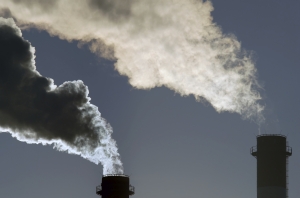- In the absence of a Clean Energy Target, the extension of Liddell and the expansion of the Snowy Hydro scheme represent the two core pillars of the government’s energy policy framework. In this update, we examine the impact of these measures on the market, namely the impact on wholesale electricity prices, and the interaction with continuing elevated gas prices.
- Should no new energy policy be implemented, elevated electricity prices are largely projected to continue, partially mitigated by 13 GW of rooftop solar and 5 GW of newly available large-scale generation incentivised by federal and state renewable energy targets.
- Direction to keep Liddell open and be refurbished ($900 million in capital investments) may throw a wrench into the 4,000 MW of advanced renewable projects that have not yet reached financial close, potentially resulting in a decrease of about 6,000,000 MWh of low-cost renewable energy from our BAU case.
- In such a scenario, modelling indicates that reduced competition from renewable sources would result in the NSW fuel mix becoming increasingly dependent on expensive gas, with annual average wholesale electricity prices growing above $100/MWh, despite the addition of more than 2,000 MW in short term renewables supply over the next two years (driven by the LRET).
- The governments’ commitment to Snowy 2.0 could provide 2,000 MW of readily dispatchable generation, the same nameplate capacity as the Liddell power station. This would provide support during peak seasons, while providing greater flexibility to potentially mothball aging coal-fired plants for use in a reserve role.
- Moreover, investment in Snowy 2.0 could offset expected uncertainty over the extension of Liddell, with Liddell able to operate more predictably as a baseload provider of 8,000 GWh of energy, rather than focus on maximising availability during peak seasons. This may reduce the likelihood of curtailing cheap renewable generation to maintain system reliability, as has occurred in South Australia, resulting in lower wholesale prices than the Liddell scenario.
- Even with Snowy 2.0, however, we continue to anticipate that any large re-investment in Liddell would be likely to jeopardise around 1,000 MW of advanced-stage renewable energy projects (notably those with dispatchable elements), which are already re-examining their business cases without revenue from a clean or renewable energy target.
- This would make new clean energy projects more reliant on highly variable regional wholesale electricity prices after 2020 rather than revenue from known clean/renewable energy targets or State RETs that favour construction within their region. For example, the presence of such a large amount of energy storage centrally located on the NSW/Victorian boarder, topped up ahead of daytime and summer peaks, would not only lower wholesale prices across both regions, but would effectively eliminate most of the daily price arbitrage opportunities in NSW that other controllable pumped hydro and solar-battery projects may rely for part of their revenue.
- Critically, considering increasing gas prices, pumped hydro energy storage (PHES) is able to increasingly serve as a lower cost substitute for gas, with the added advantage of complementing low-cost variable renewable energy (VRE) through increased flexibility and system balancing, rather than displacing it.
- The outlook for gas to play a larger role in the energy mix is therefore dimming. While gas-fired capacity still has a role to play in providing available capacity, even this role is now likely to eventually be eclipsed by energy storage and demand-side technologies. PHES is therefore becoming an alternative technology to fill the role that gas was initially envisaged to play in transitioning NEM to the increased take-up of renewable energy by combining the need for fast acting capacity with the flexibility of operating at a variety of generation levels.
To access this report, please login below. To register interest please click here >>














